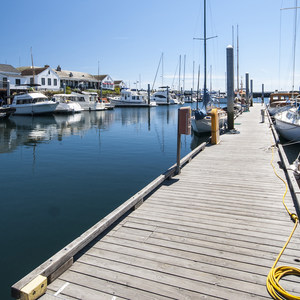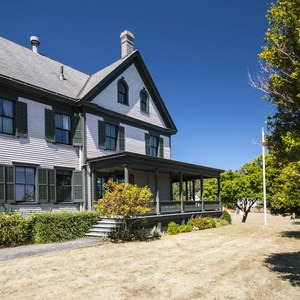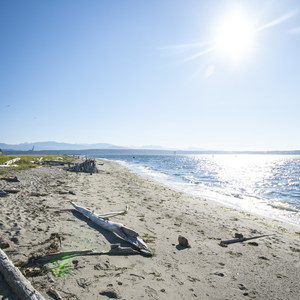Named by George Vancouver for a marquis in 1792, Port Townsend has long been appreciated as a prime harbor for vessels moving between southern Puget Sound and the Strait of Juan de Fuca or north into the San Juan Islands. In fact, until the end of the 19th century, Port Townsend was on a trajectory to become one of the most significant port cities in the U.S. portion of Puget Sound, rivaling Seattle and Tacoma. Because of its northern location, business using Port Townsend as a port of call or shipping center for international shipping routes could save the 40 mile trip to Seattle and the 60 mile trip to Tacoma. For Port Townsend, this meant a reliance on a robust railroad system that could transport goods, mainly timber, between the port and the more established rail networks south and east along the sound.
A combination of events conspired to hamstring Port Townsend's growth. The financial crisis of the 1890s was particularly impactful on this community where so much rapid growth had been leveraged on visions of future value, and finances became overextended. The lifeline of the railway quickly disappeared when the Northern Pacific Railroad opted not to develop a line terminus at Port Townsend, choosing to develop rail traffic on eastern side of the sound instead. Port Townsend's population quickly fell, and by the turn of the century the town had become a shell of its former, and envisioned, self. Fort Worden carried some of the area's economic burden along with fishing, and the arrival of the Port Townsend Paper Mill by the 1920s helped stabilize employment for a much smaller economy.
Today the character of Port Townsend is less about industry and more about culture. Many of the Victorian structures that were built before the bust of the 1890s have been maintained and restored, and the historic district made the National Register of Historic Places in 1976 and became a National Historic Landmark in 1977; add to this the remarkable examples of Victorian construction in Fort Worden State Park, and there is a decidedly anachronistic, almost dapper appearance to certain areas. Yet the town's identity is more laid back and eclectic: for several decades Port Townsend has attracted artists, tourists, and retirees. This port town is in the rain shadow of the Olympic Mountains, and summers here can feel like a steady sequence of arts and music festivals strung together by sunny seaside summer days.
The waterfront extending west from the Port Hudson Marina is a perfect place to walk on such a summer day. You'll see the Northwest Maritime Center, home the Wooden Boat Festival. You can stop in here to see boat construction underway, or perhaps take a skills class to hone you sailing skills. Walk down the street to find the heart of the waterfront, the collocation of Pope Marine Park and Jackson Tidal Park that includes a picturesque pedestrian center and a fishing pier and boat dock extending out into Port Townsend Bay. From the covered picnic shelter you'll see the ferry terminal, the paper mill, and the Olypmic Mountains in the distance to the west. A relaxing walk in a relaxing town, the Port Townsend Waterfront is a great way to introduce yourself to this historic community.
























Comments
Sign In and share them.